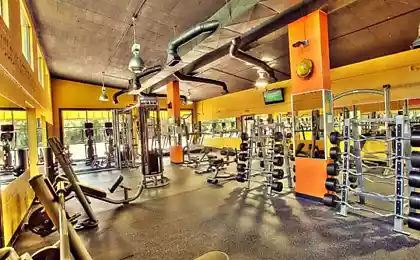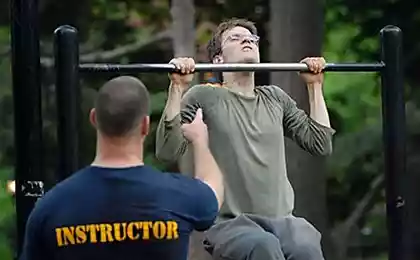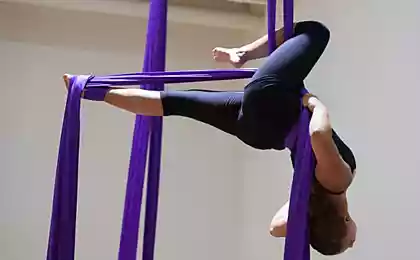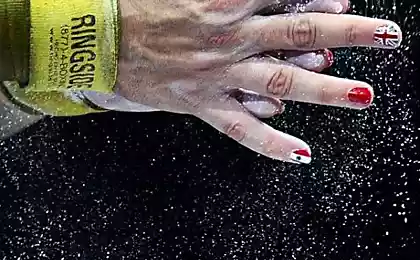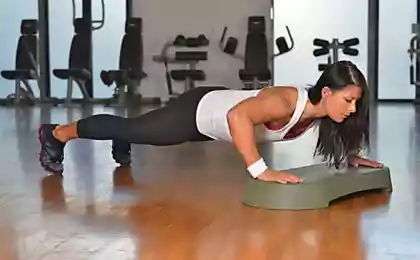247
Batout: fun and useful

Today, trampoline is one of the best-selling simulators, and not only because it is loved by children.
The benefits of jumping on this simple sports projectile are evidence. The trampoline helps - harmoniously train all muscle groups (the load is distributed evenly, and not concentrated on the legs and buttocks); - improve dexterity and coordination of movements, form proper posture; - improve the work of the circulatory, lymphatic and cardiovascular systems; - form endurance; - get rid of excess weight. Jumping on a trampoline for 5 minutes burns as many calories as a 20-minute treadmill. They have a lymphatic drainage effect, are good for training the vestibular apparatus (this, by the way, is used by fans of extreme sports - snowboarding, parkour, rollers: they work out complex elements here). But the main thing is pleasure! Scientists have proven that jumping on a trampoline contributes to the production of endorphin, the hormone of happiness. It's not for nothing that children love them. So classes will also provide a great mood. There are no contraindications for jumping. However, here you need to clearly imagine the purpose: how, where and what will be used trampoline. Today they are made a great many, although the choice when buying will not be so great. For giving, an inflatable trampoline is perfect. You can put it in a covered room, but for an apartment it will definitely be large. And his tasks are more entertaining than sports. Its advantage is suitable for family entertainment, and on a children's holiday you can send a whole company there. Sports trampolines are designed for professional training. They usually have a safety net, a sufficiently large (3x5) jump surface and are made of very durable materials (galvanized steel for the frame and springs, an elastic mesh of cord with a diameter of 5 mm). The coating is tightly stretched, thanks to this, the jump is strong, and the flight speed is high. For the safety of classes will have to equip special safety foam pits. On such shells, you can perform complex acrobatic ligaments, tumbling and practicing tricks. But it is better to do this under the guidance of a coach and in the gym. For amateur purposes, there is a whole line of trampolines for fitness, including prefabricated mini trampolines that can be used even in an apartment. The design with a diameter of less than a meter is suitable only for the smallest jumpers - children one and a half to two years old. Models with a diameter of 102-140 cm are suitable for older children, and on trampolines of 122 and 140 cm can be engaged and an adult. Depending on the availability of free space, you can purchase a trampoline with a diameter of 1.8 to 4.6 meters with a number of springs from 48 to 110, respectively - such shells can withstand a load of 90 to 150 kg, so you can exercise on them for a whole company. The difference from a sports trampoline is in the material of the canvas: here it is made of polypropylene, so its elasticity is much less. But such a trampoline is quite capable of becoming an excellent home simulator. What to do on the trampoline Of course, you need to jump on it. And 5 minutes you can just jump, maintaining a vertical position. But how soon will such monotony get bored? Where is the expected joy of flying? Therefore, we use the simplest exercises that can be performed without insurance. 1. Soldier jumps. The distance between the feet is another foot; the back is straight, the arms along the body, the knees are stretched. Slowly sway up and down to feel yourself, and only then take your feet off the net. It is important to touch the surface with a full foot, then the balance will not be lost. And pull your head up! 2. Swing jumps. Slightly complicating the matter: during the movement up the previous exercise, we turn our hands forward and up, when we land - hands to the sides - down. The important thing is not to put your hands back! They are heavy, and with acceleration - definitely pulled on the back. 3. Jumping with a group. Same starting point. Now our task in flight will be to pull the knees to the chest. Hands help: either cover the knees, or also pull up to the shoulders. Important: Do not tilt your shoulders forward! It is not the trunk that leans down, but the legs are pulled upwards - otherwise the landing will not be on the feet, but on wider surfaces. 4. If the diameter and tension of the trampoline allow, then you can practice falling back. We stand on the edge of the canvas, round (hunched) back, chin a little on ourselves, and in this position we fall back. Important: do not protrude the butt - you should fall as flat as possible. The trampoline is springy and allows you to return to a vertical position. 5. For those who are afraid to fall, the option is simpler. The starting position is sitting with outstretched legs, the back is straight, with his hands resting on the surface behind him. Make your body feel again, and push up! Important: Both the buttocks and heels should come off and land at the same time. Yoga masters say that this exercise restores youth (and on the floor it is even more difficult to perform). And you can flip back and forth, rotate around your own axis and combine all the resulting elements. Don’t forget to warm up before training to prepare your muscles. If you are serious, then on the Internet you can find good courses on trampoline jumping from club coaches and famous athletes. On the trampoline, you can perform the usual complex of morning gymnastics - this will also be fun and useful. And the laziest enough and a few minutes a day spent in “flights”, holding hands with the child. It'll have an effect. And the joy of this occupation will more than recoup the cost of purchasing a useful and fashionable sports equipment. published
P.S. And remember, just changing our consumption – together we change the world!
Source: www.glamour.ru/health/fitness/486126
Ford will provide access to the patents of electric vehicles
Light vegetable patties with spinach and herbs




